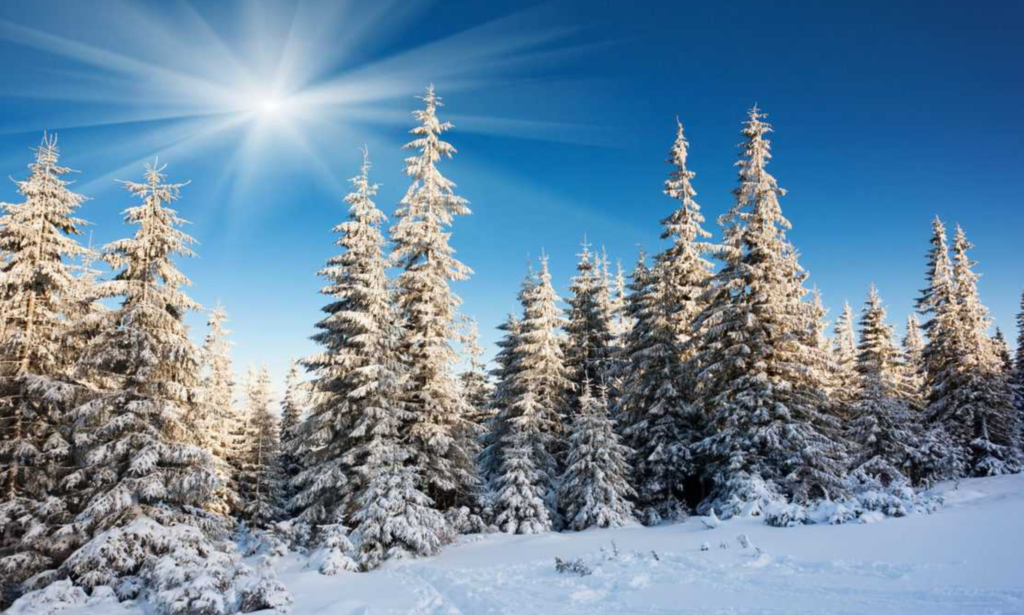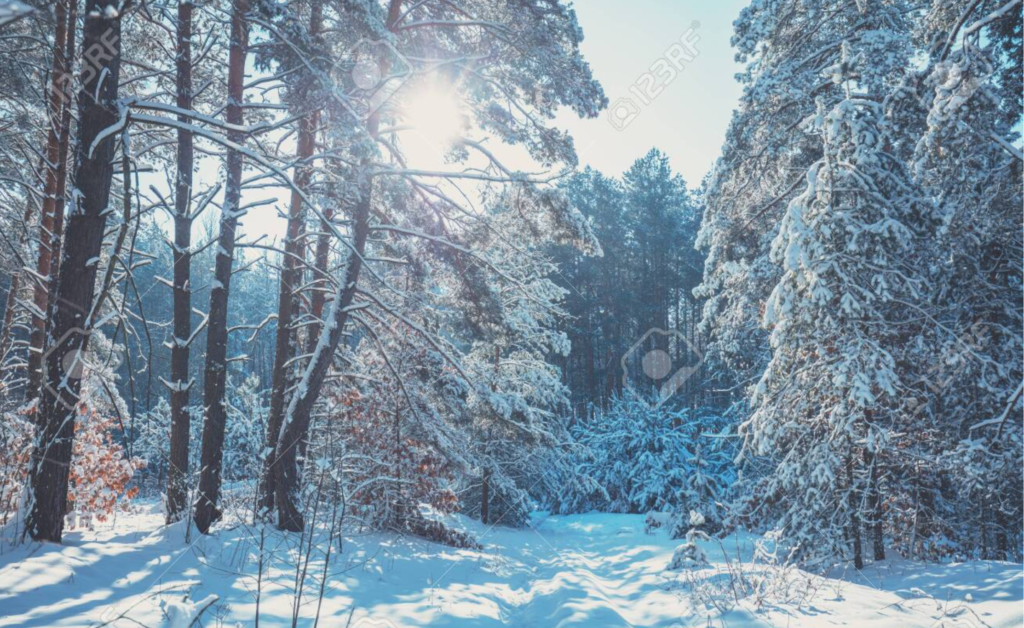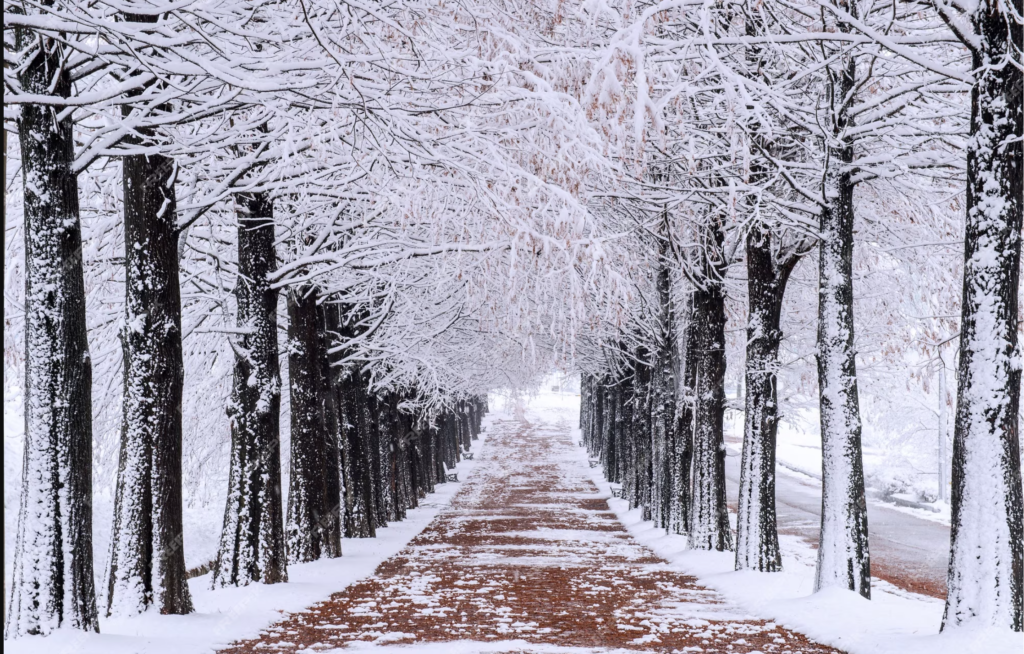As winter blankets the landscape we marvel at the resilience of trees. Despite the freezing temperatures, they stand tall, seemingly impervious to the icy grip of Jack Frost. But why don’t trees suffer the same fate as frozen pipes? Let’s delve into the fascinating science behind this natural phenomenon.
The Anatomy of Trees
To understand why trees don’t burst like cold pipes, we need to explore their inner workings. Trees have a complex vascular system that transports water and nutrients throughout their structure. This system consists of two main components: xylem and phloem.
- Xylem: Think of xylem as the tree’s plumbing. It’s responsible for transporting water from the roots to the leaves. These tiny channels act like pipes, carrying essential fluids upward.
- Phloem: Phloem complements xylem by transporting nutrients—such as sugars—downward, ensuring the tree’s overall health.
Also read : A Geologist Found The Oldest Water On Earth

Image source : Tree journey
The Freezing Dilemma
When water freezes, it expands. This expansion is the reason why pipes burst in unheated homes. But trees don’t suffer the same fate. Here’s why:
- Flexibility: Unlike rigid metal pipes, trees are softer and more flexible. Their tissue can stretch somewhat instead of bursting. When the water in the channels and between cells freezes, the tree’s tissue accommodates this expansion without catastrophic consequences.
- Water Content: In preparation for winter, trees shed excess water. Cells reduce their water content, minimizing expansion upon freezing. Less water means less pressure on the tree’s delicate structure.
- Cellular Survival: While the fluid transport channels (xylem and phloem) can partially freeze, the tree’s individual cells cannot. Intracellular freezing is instantly fatal. Trees that survive in cold climates protect their cell interiors from freezing.

Image source : 123RF
Survival Strategies
Trees employ ingenious strategies to brave the winter chill:
- Sugar Production: Some trees produce more sugar as winter approaches. When this sugar dissolves in water, it acts like natural antifreeze, lowering the freezing point. Maple trees, for instance, channel this winterization process into delicious maple syrup.
- Supercooling: Water can remain liquid below its traditional freezing point if no ice crystals form. Trees take advantage of supercooling, preventing intracellular freezing.

Image source : freepik
The Cracking Sound
Next time you’re in a winter forest, listen closely. The crackling sound or gun-shot pop you hear isn’t your imagination—it’s trees freezing and bursting. But fear not; the damage is usually minimal for several reasons:
- Abundance of Channels: A tree boasts hundreds to tens of thousands of fluid channels. If one bursts, others step in. Each channel is small, minimizing the impact of individual bursts.
- Cellular Resilience: Even if a channel bursts, the tree’s cells remain intact. Remember, intracellular freezing is the real threat.

Image source : 1zoom
Conclusion
So, the next time you admire a snow-covered tree, appreciate its remarkable ability to withstand freezing temperatures. Trees don’t freeze and burst like cold pipes because they’ve evolved to be flexible, resilient, and resourceful. As winter settles in, let’s raise a metaphorical toast to these silent survivors—the guardians of our forests.
Frequently Asked Questions (FAQs)
Q: Why don’t trees freeze and burst in the winter?
A: Trees have evolved several mechanisms to withstand winter temperatures. They contain a natural antifreeze in their sap, their cells are flexible, and they enter a state of dormancy, among other adaptations, which collectively prevent freezing and bursting
Q: What is the natural antifreeze in trees, and how does it work?
A: The natural antifreeze in trees is sap, which contains sugars that lower the freezing point of the fluid. This helps prevent the formation of ice crystals within the tree’s vascular system.
Q: How do trees regulate water movement to avoid freezing?
A: Trees can regulate water movement, reducing flow as temperatures drop. This helps minimize the risk of ice formation within their structures, safeguarding them against damage.
Q: Why don’t tree cells burst when water freezes, unlike pipes?
A: Tree cells are flexible and can tolerate the expansion of freezing water. Additionally, substances in the cell walls prevent them from becoming too brittle, ensuring the cells can withstand freezing temperatures without bursting.
Q: What is winter dormancy, and how does it protect trees?
A: Winter dormancy is a state in which trees slow down metabolic processes, including growth and energy consumption. This conservation of energy helps trees survive the winter without sustaining damage.
Q: How does bark contribute to preventing trees from freezing and bursting?
A: The bark of a tree serves as insulation, protecting the sensitive inner layers from extreme temperatures and wind. This insulation helps the tree maintain a stable internal environment and prevents freezing.
Q: Do different tree species have specific adaptations for winter survival?
A: Yes, over millions of years, trees have undergone adaptive evolution to thrive in various environmental conditions, including winter climates. Species in cold regions have specific traits that enhance their ability to withstand freezing temperatures
Q: Can trees redistribute water within their structures to prevent freezing?
A: Yes, trees can redistribute water, ensuring that no single part becomes excessively waterlogged and prone to freezing. This dynamic water redistribution is a key adaptation to changing environmental conditions.
Q: Are there any risks to trees during winter despite their adaptations?
A: While trees are well-adapted to winter conditions, extreme weather events or prolonged periods of cold can still pose challenges. In such cases, trees may experience stress, but their natural adaptations generally help them endure the winter season.
Q: How can humans help protect trees during winter?
A: Allowing trees to follow their natural winter processes without unnecessary disturbance is crucial. Avoiding physical damage to bark and providing proper care, especially in urban environments, can contribute to the overall health and resilience of trees during winter.
Remember, the forest’s winter symphony is a testament to nature’s ingenuity, and trees continue to thrive despite the frosty challenges they face.
Also read : The Fragile Bond: Understanding Why Mother Birds May Abandon Touched Chicks




































